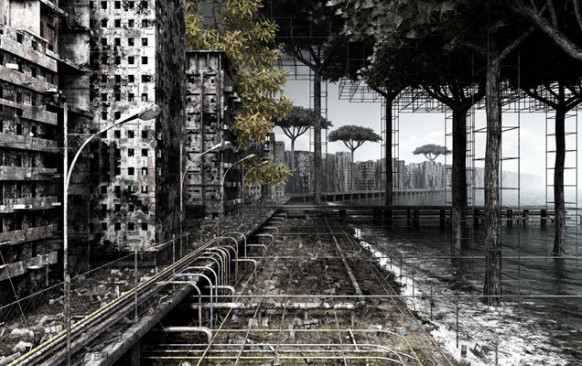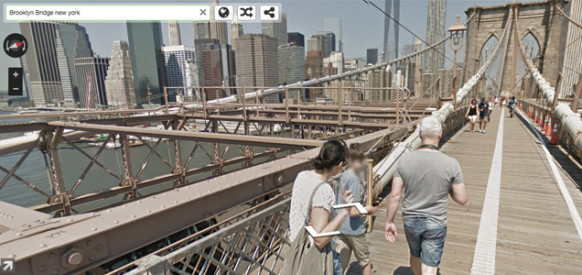It seems our passion for wayfinding design could actually be reshaping our brains, according to a new study from University College London and Bangor University.
At BrandCulture, we spend lots of time understanding how people perceive an environment and make decisions while navigating unfamiliar spaces. We’ve always liked to think it takes a certain type of creative brain to design complex wayfinding systems.
So we were curious to read about a team of researchers who got together to test their hypothesis that architects and artists talk about space in distinct ways, and think differently, too.
Researchers from Australian National University, University College London (UCL) and Bangor University asked 32 experienced architects, sculptors, and artists to describe three different images: a Google Street view image, a painting of St. Peter’s Basilica, and a computer-generated surreal scene.
It’s an experiment that’s pretty easy to replicate. How would you describe this image?
If you found yourself describing the path you might take through this space, or thinking about where you would go, then it’s possible you’re more architecturally minded than other people.
“What we found is that architects generally talk about path through the space, even when they’re describing it. Whereas painters would think about the 2D and the 3D space presented in the image, so how the different planes are working, and then flip between these perspectives,” say the researchers.
Above & top: Artwork by Giacomo Costa
According to Fast Co. Design, the study also finds that painters are more like to say ‘back’ of the image, whereas architects are more likely to say ‘end’ of the image.
Architects were more likely to focus on the barriers and boundaries of spaces, and tended to think about how they would inhabit each space, indicating a more three-dimensional perspective.
Painters, on the other hand, are more preoccupied with the foreground and background of the image, and on the two-dimensional plane of the painting itself, and the dimensions of objects within it.
Above: Google Street View, Brooklyn Bridge, New York
So why does this matter?
The study shows that architects – and no doubt wayfinding designers also – bring a very different way of thinking to the projects they work on.
It also demonstrates that the profession you choose has a profound impact on the way you perceive the world around you. This may seem obvious, but apparently this study – recently published in the journal Cognitive Science – is the first to prove it.
Watch UCL’s video about the study here



